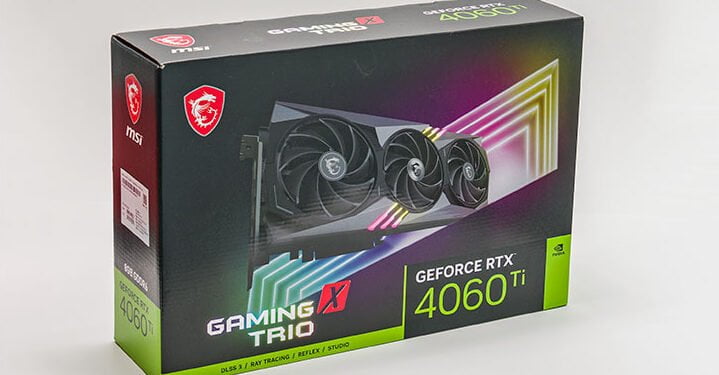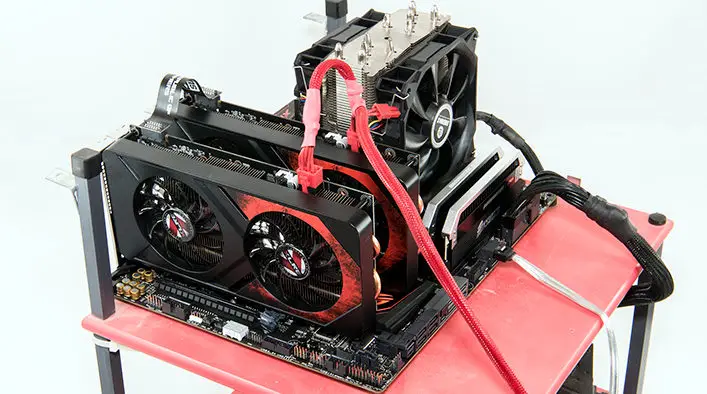Regardless of the why of how things played out in this generation versus the last, one thing is clear: we the consumers lost out on getting a 256(or even 192)-bit bus x60 Ti this generation. Thankfully, helping to counteract this issue is the fact the memory used is faster than what the original GeForce RTX 3060 Ti series used. To be precise instead of GDDR6 memory ICs with an ‘effective’ 14Gbps (aka 1750Mhz clock) performance, the RTX 4060 Ti uses GDDR6 rated for 18Gbps (aka 2250Mhz clock). So instead of the bus being half (of 448 GB/s) it is more like ~64 percent (288GB/s).
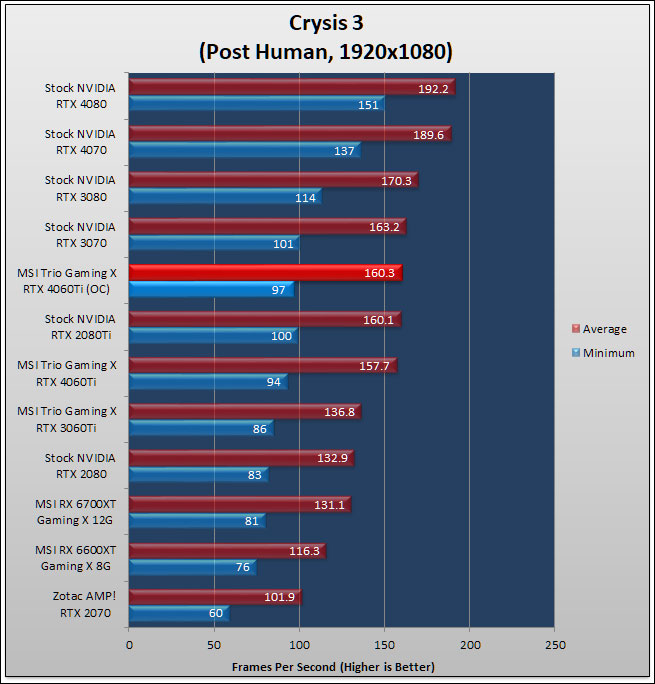
Sadly… this argument does ignore the fact that NVIDIA did release, late into the 3000-series life cycle, an upgraded RTX 3060Ti which used GDDR6X memory modules (clocked in at an effective 19Gbps of performance). Making such arguments a bit moot… as that flips the script and makes it a 608.3 vs 288 bus vs. bus comparison. Even worse, since the 3060 Ti GDDR6X release faster GDDR6X has become available. For example, the GeForce RTX 4090 and 4070 make use of 21Gbps GDDR6X memory ICs. The GeForce RTX 4080 uses 22.4Gbps variants… and the RTX 4080 TI is rumored to be (upon its release) using Micron’ big boi 24Gbps GDDR6X RAM ICs.
The ‘cheaper’ of the new gen GDDR6X 21Gbps RAM ICs would have given this card a bus 336.1Gbps (~25 percent smaller than original / 44 percent of 2nd gen 3060 TI). The 22.4Gpbs GDDR6X RAM would have given it a 358.4Gbps bus (80 percent of the original 3060Ti, ~59% of second generation), and 2400 goodness would have bumped things up to… gasp…. 384GBps – or nearly 86 percent of the original RTX 3060Ti. So yes. Even with the bus width debacle considered NIVIDA could have negated most of this issue via technology.
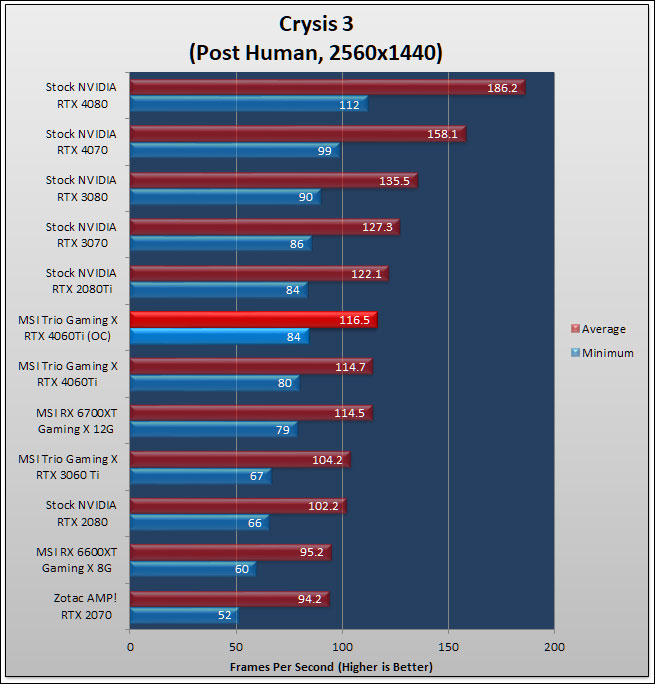
In off the record talks with Big Green insiders the reason the design team did not do this is they wanted to keep the price the same as the original 3060Ti. GDDR6X costs a bit more per Gigabyte than high speed GDDR6. So, the changeover would have added tens of dollars to the MSRP. Tens. Of. Dollars. Cynicism aside, the reason they did not comes down to either sourcing enough GDDR6X to satisfy RTX 4060 Ti sales… or NVIDIA wanted to further, artificially, separate the 4070 and 4060Ti segments.
Either way, this opting for slower GDDR6 over GDDR6X is a missed opportunity to inject even more value to a generation that has garnered a reputation for offering everything but value. Bluntly stated, while 1080P gaming performance will not be noticeably handicapped in most games, once you scale up the resolution to even 1440P this slower bus will start becoming an obvious bottleneck. This stands in stark contrast with the last generations RTX 3060Ti options which (for their time) were good 1080P and a fairly decent 1440P options. Which was unusual in that x60 TI class cards are historically 1080P only cards… but we all had hoped that “the times they are a changin” and NVIDIA was going to continue to make the the RTX x60 Ti series a ‘cross over’ series for those who needed 1080P performance now, but wanted future proofing 1440P performance for later.
To be perfectly candid, MSI and the other top tier board partners need to start applying some (long overdue) pressure to NVIDIA. Enough pressure and maybe they will either change their future architecture’s memory controller configuration… or stop making under 192-bit sized bus options on anything but their entry level cores. Either would be acceptable.
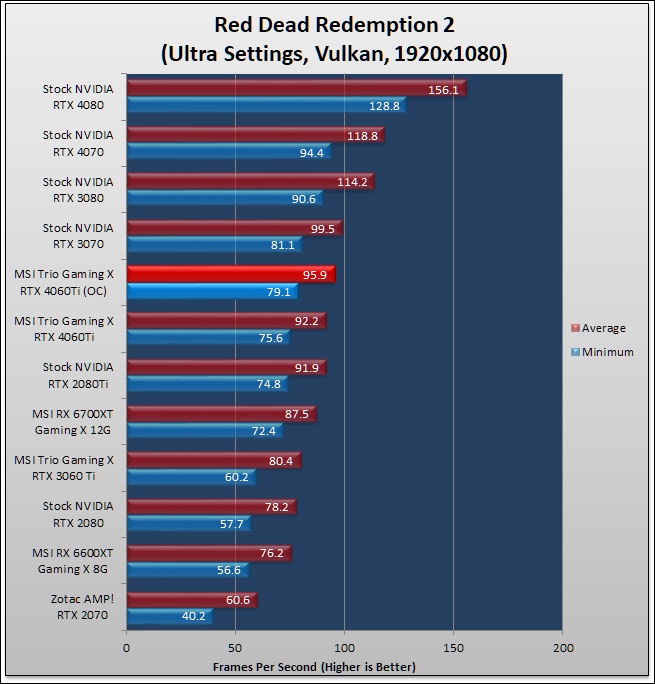
Until such halcyon days are (once again) upon us, MSI has done their level best to give you the owners of their RTX 4060 Ti cards as many options as possible. For example. All one need do is spend a few moments in MSI afterburner program and one can easily transform this rather decent 1080P card into an extremely good 1080P card. To start simply slide the maximum power limit all the way to the right to add an extra 22 percent to the board limit. This transforms a 160TDP card into a 195TDP one. This will let the card ‘auto’ overclock its cores even higher than what they are set to at the factory. In testing we saw peaks in the low 2900s and estimate the average to be about 2,885Mhz – or about an extra 215Mhz over factory, or 350Mhz over what NIVIDA designed their small core AD106-350 to do. To put that another way, in return for an additional 35 watts of power one can get an extra 8 percent of clock speed over factory overclocking, and a respectable 13.8% over NVIDIA specs. More impressive is this card is still whisper quiet, still cool running, and still tailor made for Silent PC enthusiasts. All of which allows it to clock higher than most of the other RTX 4060 Tis out there.
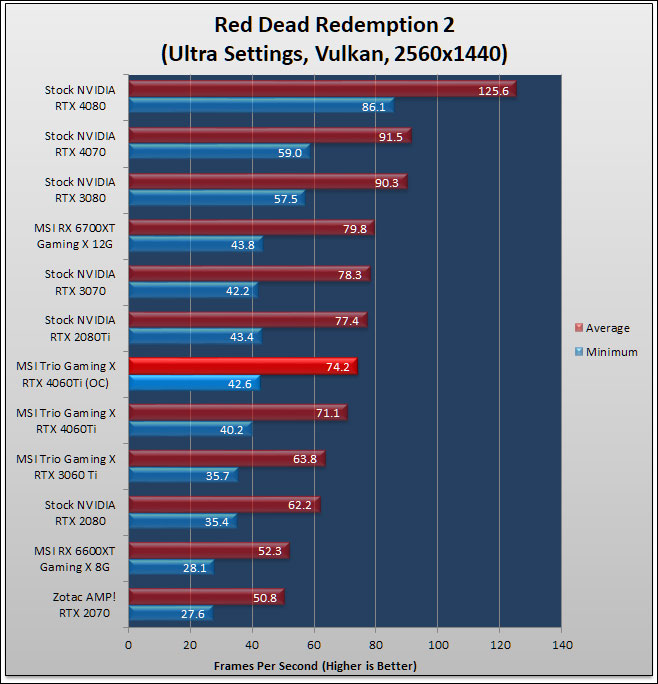
This however does nothing for the largest issue: memory bus size. Here things are a bit rosier than we first feared. Thanks to very, very good Sammy GDDR6 ICs (whose RAM division are not incompetent like their division responsible for their 8nm foundry) one can easily turn those 2250Mhz into 2700 (or higher) clocked GDDR6 ICs. This in turn transforms the small 288GB/s memory bus into a 345.6GB/s one. Still smaller than what the last gen x60 TI has at stock… but much better. To be precise this additional 450Mhz represents a whopping 20 percent increase in the memory bus performance and narrows the generation memory bus gap to a more reasonable 22.8 percent. Theoretical math aside, this combination of (even) higher core clocks with high memory clocks will give you about 5 percent improvement in real-world gaming performance (depending the game and resolution). Which is nothing to sneeze at for a mere 35 watts of added power.
